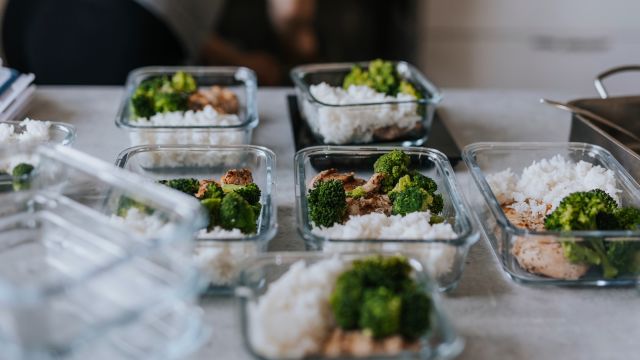Updated on January 31, 2024
When you have diabetes, you probably know you get a lot of advice thrown at you. Diabetes tips can run the gamut, but one of the most common recommendations given by healthcare providers (HCPs) is to create a diet filled with foods that help lower your blood sugar levels. Sounds simple, but doing so takes work.
Thankfully, there’s an easy-to-follow nutritional formula that can help do the trick—and keep your blood pressure, cholesterol, and body weight in check at the same time, too. So, what is that formula? There are three parts:
- Divide
- Add
- Subtract
In short, the approach means dividing up the portions on your plate in a better way, adding certain healthy foods, and subtracting choices that are unhelpful for blood sugar control. When you take these three steps, you can set yourself on the path toward better control of your blood sugar.
Divide up your plate
Many people devote a half or more of their dinner plate to a meat-based main course. But you'll want to readjust that thinking. Half of your plate should be produce. The other half can be divided between lean protein (like skinless chicken or fish) and high-fiber starches (like whole-wheat pasta or potatoes with the skins on).
Add these healthy foods
To really control your blood sugar, you need to focus on foods that your body digests slowly. That helps sugar release into your bloodstream slowly and steadily. You'll also want to make sure the foods you choose are nutritious. Here are some examples of healthy foods that can lower your blood sugar levels:
- Beans: Not only are beans (like kidney and pinto beans) a low-fat, nutritious source of protein, they're also high in fiber. And that's just what you want, because high-fiber foods slow down digestion.
- Whole grains: Like beans, whole grains are nutrient-rich, high in fiber, and low on the glycemic index. (Translation: They digest more slowly than refined and processed grains, keeping your blood sugar levels steady.)
- Fresh fruits and vegetables: Many fruits and veggies are high in fiber. But just as important, they're typically low in calories, thanks to their high water content, so they help you manage your weight, too. Add in the fact that produce is rich in inflammation-reducing antioxidants, and you've got more than enough reason to fill up half your plate with things like broccoli, leafy greens, zucchini, bell peppers, onions, string beans, eggplant, and the like. And a delicious piece of fresh, ripe fruit is a satisfying ending to any meal.
- Fish: Because high blood sugar can put your heart health at risk, you'll want to do everything you can to protect your heart. And that means choosing healthful lean protein for your diet. Fish just happens to fit the bill and also brings the added benefit of heart-healthy omega-3 fatty acids.
- Low-fat dairy: This is another good choice for lean protein. Some research has suggested that higher intake of low-fat dairy (think low-fat Greek yogurt) may help prevent the onset of type 2 diabetes.
- Nuts: This is the snack that really satisfies. Next time you get a craving for potato chips, grab a small handful of nuts instead, preferably unsalted. Nuts fill you up with fiber and some of them help you load up on omega-3 fatty acids, as well.
Subtract these less-healthy options
Many of us are great at adding stuff to our plates. But along with making smart additions, it's also important to pare down some of our less healthy go-to foods. Here are the items you should be eating less of, for the sake of your blood sugar levels:
- Refined grains: White breads, white pasta, white rice, refined-flour pastries—these all get digested quickly by the body, which can cause your blood sugar levels to spike. Whole grains are the way to go.
- Sugary foods: Like refined flour, sugar is digested in a snap, flooding your bloodstream with glucose. Sugar is not completely off the table, though. Just make it the occasional treat, because not only does sugar contribute to rises in blood sugar levels, but it adds a lot of calories to your daily intake.
- Red meat: Cutting back on meat will reduce your intake of saturated fat. That's the kind that is unhealthy for your heart and can lead to weight gain. Consider reducing red meat intake to one 4-ounce serving per week or less.
- Fried foods: French fries, onion rings, potato chips, and other fried foods are yet another source of saturated fat that you'll want to avoid. Plus, these are energy-dense foods that are often based on refined carbs, which means that you're likely to get more calories than your body needs and a boost in blood sugar levels.
The bottom line is that eating too much of anything—even otherwise healthful foods—can cause problems if you're seeking to manage your weight and your diabetes.






